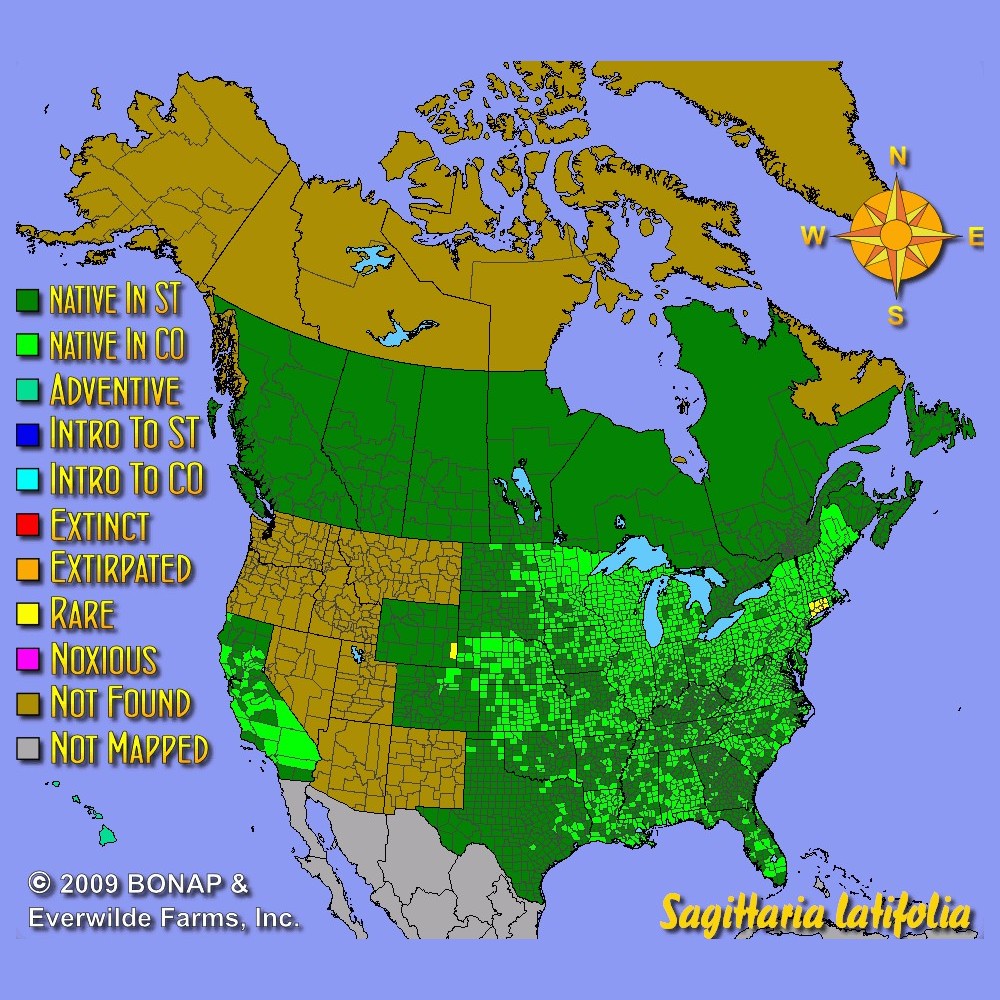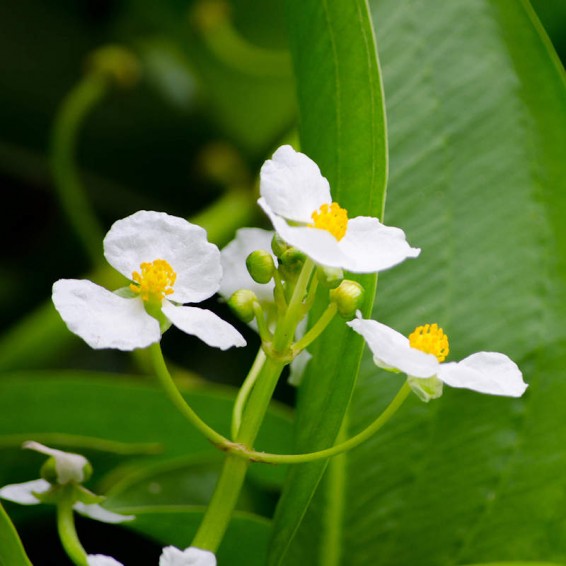Common Arrowhead Seeds
- HOW TO GROW
- FAST FACTS
- REVIEWS
HOW TO GROW
Sowing: Plant in late fall, pressing the common arrowhead seed into the surface of the soil since it needs light to germinate. The soil should be continuously wet, even muddy. In order to break its dormancy, this seed needs to experience cold/warm/cold temperatures. This usually means it germinates a year after planting.
Growing: As the plants grow, keep the soil consistently saturated; the water depth can be increased as the plant develops. This plant thrives either at water's edge or in up to 12" of water. It will eventually spread by rhizomes and by self-seeding.
Harvesting: These blossoms do not perform well as cut flowers, and are best enjoyed outdoors.
Seed Saving: After the flowers fade, the seeds will develop in a rounded seed head that eventually begins to turn brown and dry. Gather the dried seed heads and spread them out to dry away from direct sunlight. Rub them lightly to separate the Sagittaria Latifolia seeds from the plant material. Keep the common arrowhead seeds in a cool, dry place.
FAST FACTS
Common Names: Broadleaf Arrowhead, Duck Potato
Latin Name: Sagittaria latifolia
Species Origin: US Native Wildflower
Type: Native Wildflowers
Life Cycle: Perennial
USDA Zones: 2, 3, 4, 5, 6, 7, 8, 9, 10, 11, 12
US Regions: California, Plains/Texas, Midwest, Northern, Northeast, Southeast
Seeds per Ounce: 58,900
Stratification: Cold/Wet for 8 Weeks
Germination Ease: Stratify 8 Weeks
Sunlight: Full Sun, Part Sun
Height: 30 Inches
Color: White
Bloom Season: Blooms Late Summer, Blooms Early Fall
Uses: Attracts Pollinators, Attracts Honeybees, Hummingbirds
Unique
Something unique for your guests to look at! Wonderful addition to a pond or community area.
Great!
So far so good. The packaging was great but I won't know how germination is until it grows next spring. Other than that, my experience was excellent.
Ordered seeds
Ordering was easy. Prices were great. Shipped fast. Overall great store to purchase from.
native plants
looking forward to seeing first shoots emerge..
Getting ready
I have not planted yet but my order came very fast and accurate I'll use them again soon
GREAT ... will do again ...
GREAT ... fast delivery ... will do again .
DESCRIPTION

HOW TO GROW
Sowing: Plant in late fall, pressing the common arrowhead seed into the surface of the soil since it needs light to germinate. The soil should be continuously wet, even muddy. In order to break its dormancy, this seed needs to experience cold/warm/cold temperatures. This usually means it germinates a year after planting.
Growing: As the plants grow, keep the soil consistently saturated; the water depth can be increased as the plant develops. This plant thrives either at water's edge or in up to 12" of water. It will eventually spread by rhizomes and by self-seeding.
Harvesting: These blossoms do not perform well as cut flowers, and are best enjoyed outdoors.
Seed Saving: After the flowers fade, the seeds will develop in a rounded seed head that eventually begins to turn brown and dry. Gather the dried seed heads and spread them out to dry away from direct sunlight. Rub them lightly to separate the Sagittaria Latifolia seeds from the plant material. Keep the common arrowhead seeds in a cool, dry place.
FAST FACTS
Common Names: Broadleaf Arrowhead, Duck Potato
Latin Name: Sagittaria latifolia
Species Origin: US Native Wildflower
Type: Native Wildflowers
Life Cycle: Perennial
USDA Zones: 2, 3, 4, 5, 6, 7, 8, 9, 10, 11, 12
US Regions: California, Plains/Texas, Midwest, Northern, Northeast, Southeast
Seeds per Ounce: 58,900
Stratification: Cold/Wet for 8 Weeks
Germination Ease: Stratify 8 Weeks
Sunlight: Full Sun, Part Sun
Height: 30 Inches
Color: White
Bloom Season: Blooms Late Summer, Blooms Early Fall
Uses: Attracts Pollinators, Attracts Honeybees, Hummingbirds
Reviews
Review
Unique
Something unique for your guests to look at! Wonderful addition to a pond or community area.
Review
Great!
So far so good. The packaging was great but I won't know how germination is until it grows next spring. Other than that, my experience was excellent.
Review
Ordered seeds
Ordering was easy. Prices were great. Shipped fast. Overall great store to purchase from.
Review
native plants
looking forward to seeing first shoots emerge..
Review
Getting ready
I have not planted yet but my order came very fast and accurate I'll use them again soon
Review
GREAT ... will do again ...
GREAT ... fast delivery ... will do again .





